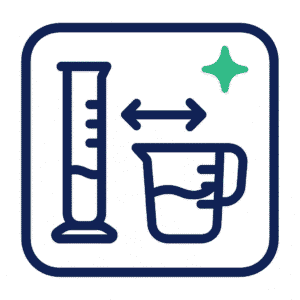Measurement is a practical language for comparing quantities. The text that follows treats common unit systems and conversion techniques with emphasis on clarity, exact factors, and operational practice. The presentation is technical, third person, and intends to be useful to engineers, laboratory personnel, educators, and calculational hobbyists.
“I often say that when you can measure what you are speaking about, and express it in numbers, you know something about it; but when you cannot measure it, when you cannot express it in numbers, your knowledge is of a meagre and unsatisfactory kind.” — William Thomson, Lord Kelvin.
(Source: discussion and citation of Lord Kelvin’s 1883 text)
Historical Anchors and Standard Definitions
Measurement standards moved from local artifacts to internationally fixed definitions during the 19th and 20th centuries. For length, the authoritative modern statement reads: “The metre is the length of the path travelled by light in vacuum during a time interval of 1/299 792 458 of a second.” That text is the operative SI definition used for precision realisations. (BIPM: Resolution 1 (17th CGPM, 1983))

Mass underwent a parallel conceptual shift. The kilogram’s present SI formulation states that it is fixed by the Planck constant: “The kilogram, symbol kg, is the SI unit of mass. It is defined by taking the fixed numerical value of the Planck constant h to be 6.626 070 15 × 10?³4 when expressed in the unit J·s.” This formulation allows mass metrology to be traceable to an invariant of nature rather than a single physical prototype. (BIPM: SI base unit — kilogram)
International adoption of metric-based systems is near-universal. Surveys and usage summaries identify three states with significant use of traditional non-metric measures: the United States, Liberia, and Myanmar; the remainder of the world employs metric units in formal, legal, or de facto practice. (NIST: HB44 — General tables of units (reference for international usage))
Operational Principles For Converting Units
General rules that improve reliability:
- Keep the conversion factor in full precision through intermediate steps; round only at the final result.
- Treat exact legal definitions as exact numbers. For instance, the international inch is exactly 2.54 centimetres by international agreement, and that value is suitable as an exact multiplicative constant. (NIST: units and exact relationships)
- When mixing unit families, carry units algebraically (unit cancellation). This reduces errors from misplaced decimal points.
- Always state both the original unit and the converted unit with the same number of significant digits appropriate to the measurement context.
Length & Distance — Practical Reference Values
Common length conversion constants used in calculations:
- 1 metre = base SI unit of length (see SI definition above). (BIPM: metre definition)
- 1 inch = 2.54 centimetres (exact). (NIST: inch/foot exact relations)
- 1 foot = 0.3048 metre (exact). (NIST: international foot)
- 1 yard = 0.9144 metre (exact). (NIST: yard definition)
- 1 statute mile = 1,609.344 metres (exact). (NIST: statute mile and conversions)
- 1 nautical mile = 1,852 metres (exact by international agreement for navigation). (IHO: nautical mile definition)
Suggested use-cases:
- Short lengths: millimetre, centimetre, inch.
- Building and surveying: metre, foot, yard.
- Aviation and maritime: nautical mile and knot (1 knot = 1 nmi/h).
Weight & Mass — Reference Conversion
Key constants and practice notes:
- 1 kilogram = SI base unit of mass as defined in the SI redefinition. (BIPM: kilogram definition)
- 1 avoirdupois pound (lb) = 0.45359237 kilogram (exact by international agreement). (NIST: pound-to-kilogram definition and history)
- 1 ounce (avoirdupois) = 28.349523125 grams.
Operational note: laboratory work that depends on sub-ppm accuracy must use traceable mass standards and document the chain of calibration. For general engineering, the numeric factor for pound-to-kilogram above is sufficient.
Volume & Capacity
Representative conversions:
- 1 litre = 0.001 cubic metre (exact by definition).
- 1 US gallon = 3.785411784 litres (exact through 231 cubic inches). (NIST: US gallon and cubic-inch definition)
- 1 Imperial (UK) gallon = 4.54609 litres (exact by definition). (NIST: Imperial gallon)
Application guidance: specify whether a volume refers to a US customary unit or to an imperial unit before converting. For fluid measurement in recipes, state the exact convention in use.
Temperature
Canonical conversion formulas:
- Celsius to Kelvin: K = °C + 273.15.
- Celsius to Fahrenheit: °F = (°C × 9/5) + 32.
- Fahrenheit to Celsius: °C = (°F – 32) × 5/9.
Accuracy remark: the Celsius–Kelvin relation is exact by definition of the kelvin and degree Celsius.
Speed
Useful relations:
- 1 m/s = 3.6 km/h.
- 1 km/h = 0.2777777778 m/s (exact ratio 1/3.6).
- 1 mile per hour (mph) = 1.609344 km/h (exact).
- Knot: 1 knot = 1 nautical mile per hour = 1.852 km/h.
Choice of unit depends on domain: transport engineering commonly uses km/h or mph; fluid dynamics and laboratory tests usually use m/s.
Power
Representative unit conversions:
- Watt (W) = SI unit of power (1 J/s).
- Mechanical horsepower (imperial) ˜ 745.699872 watts; this value follows from the historic definition of horsepower combined with the exact definitions of foot and pound. (Reference: horsepower definitions and conversions)
When specifying power draw or engine output, identify the convention for horsepower (mechanical, electric, metric) because numeric values differ.
Data & Digital Storage
Binary-vs-decimal prefixes create frequent ambiguity. Recommendations and constants:
- IEC binary prefixes: 1 kibibyte (KiB) = 2¹° bytes = 1,024 bytes; 1 mebibyte (MiB) = 2²° bytes = 1,048,576 bytes. These IEC prefixes were introduced to disambiguate kilobyte versus kibibyte usage. (NIST: binary prefixes and comparison) (IEC: prefixes for binary multiples)
- SI decimal prefixes: 1 kilobyte (kB) = 1,000 bytes, 1 megabyte (MB) = 106 bytes, 1 gigabyte (GB) = 10? bytes.
Practical instruction: when reporting storage capacity use the explicit notation (GiB or GB) and document whether decimal or binary semantics apply.
Fuel Consumption
Two common formats in transport statistics:
- Litres per 100 kilometres (L/100 km): widely used in Europe and many national agencies.
- Miles per gallon (mpg): used in the United States (US mpg) and the United Kingdom (imperial mpg differ by the gallon definition).
Conversion hint: to convert mpg (US) to L/100 km use the exact relations among mile, gallon, and litre already listed.
Cooking & Ingredients
Kitchen measures are not universal; common reference values for conversions in recipes:
- 1 US teaspoon ˜ 4.92892 millilitres.
- 1 US tablespoon = 3 teaspoons ˜ 14.7868 millilitres.
- 1 cup (US) = 236.5882365 millilitres (standard reference value for recipe conversion).
Recommendation: follow the convention specified by the recipe source (US, UK, metric) and convert only when necessary, preserving ingredient mass where precision matters for chemical reactions (baking, confectionery).
Force
Definition and conversion:
- Newton (N) = 1 kg·m·s?² by definition (derived SI unit).
- 1 pound-force (lbf) ˜ 4.4482216152605 newtons (use the exact legal relations of pound and standard gravity where needed).
Force calculations should explicitly indicate whether mass quantities are in kg or lb and whether gravitational acceleration is assumed as standard gravity (9.80665 m·s?²) for conversions that use mass-to-force relations.
Flow Rate
Common volumetric flow units:
- Cubic metre per second (m³/s) = SI volumetric flow.
- Litres per minute (L/min). Conversion: 1 m³/s = 60,000 L/min.
- Gallons per minute (GPM) for hydraulic contexts (specify US or imperial gallon).
Care in pump and piping calculations: use consistent units of density when converting between mass flow and volumetric flow.
Light & Illumination
Photometric relations:
- Lumen (lm) = luminous flux.
- Lux (lx) = luminous flux per unit area; 1 lx = 1 lm/m² (exact by definition).
- Candela (cd) = SI base unit of luminous intensity. (BIPM: candela and photometric base)
Lighting design uses lux levels as prescriptive targets for tasks; sensor data and specification sheets typically present lumens and candela values that require unit awareness for correct spatial interpretation.
Quick Conversion Examples
- Convert 5 miles to kilometres: 5 × 1.609344 = 8.04672 km. (NIST: mile conversion constants)
- Convert 150 lb to kilograms: 150 × 0.45359237 = 68.0388555 kg. (NIST: pound to kilogram)
- Convert 60 mph to m/s: 60 × 1.609344 km/h = 96.56064 km/h; 96.56064 / 3.6 = 26.8224 m/s.
These examples use exact legal conversion constants where those exist.
Sources and Further Reading
Selected authoritative references used in composing this guide:
- International Bureau of Weights and Measures (BIPM) — SI base units and brochure. (BIPM SI overview)
- National Institute of Standards and Technology (NIST) — conversion tables and unit definitions. (NIST: units and definitions)
- Binary prefixes and digital-storage conventions — IEC and NIST pages. (IEC: binary prefixes) (NIST: binary prefixes)
- Historic and usage statistics on international metric adoption. (NIST HB44 — General tables of units)
Final Considerations
Measurement practice benefits from the consistent application of exact conversion factors, the preservation of precision during intermediate calculations, and explicit labelling of unit systems. The guidance above addresses core conversion topics that connect directly to everyday scientific and engineering tasks: Length & distance, Weight & mass, Volume & capacity, Temperature, Speed, Power, Data & digital storage, Fuel consumption, Cooking & ingredients, Force, Flow rate, Light & illumination. When precision matters, consult the primary standardization documents cited above and use instruments calibrated against national or international standards.






